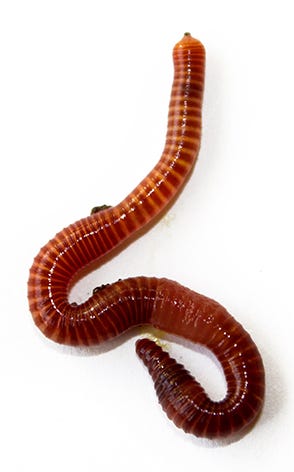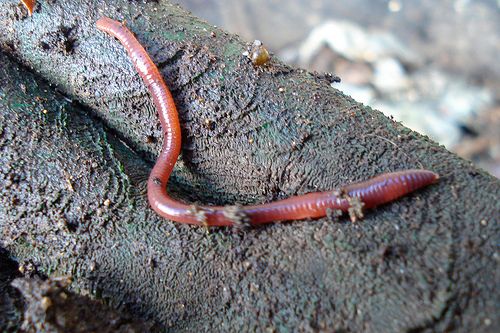Red Wiggler Worms - Crucial for Healthy and Efficient Gardens
Red Wiggler Worms - Crucial for Healthy and Efficient Gardens
Blog Article
Red Wiggler Worms Demystified: Opening the Keys of Vermiculture for Greener Living and Nutrient-Rich Dirt
In the realm of sustainable techniques for enriching soil quality and advertising eco-conscious living, red wiggler worms play a critical yet typically forgotten duty. These modest animals possess the amazing capability to change natural waste into nutrient-rich castings that act as a powerful natural fertilizer. By delving into the globe of vermiculture, one can discover a variety of advantages that prolong much past traditional composting approaches. Understanding the details of taking care of these worms, maximizing their environment, and using their spreadings can result in a greener lifestyle and healthier soil for plants to flourish.
The Duty of Red Wiggler Worms
Red Wiggler worms play an essential duty in composting systems by efficiently damaging down raw material into nutrient-rich spreadings. These voracious eaters take in a range of natural products, such as cooking area scraps, backyard waste, and paper items. As they feed, the worms' digestive procedures break down the raw material right into a fine, dark, and nutrient-dense material referred to as worm spreadings or vermicompost.
The spreadings created by Red Wiggler worms are highly valuable for soil health and plant growth. They are abundant in necessary nutrients like phosphorus, potassium, and nitrogen, which are vital for sustaining healthy and balanced plant development. In addition, worm castings consist of beneficial microbes and enzymes that help boost soil framework, boost water retention, and boost nutrient uptake by plants.
Advantages of Vermicomposting

It boosts dirt framework, improves dirt oygenation, and raises soil dampness retention. Vermicompost additionally improves the dirt with essential nutrients like nitrogen, phosphorus, and potassium, advertising plant development and total dirt fertility.
Additionally, vermicomposting assistances sustainable gardening methods by supplying a chemical-free and natural choice to artificial fertilizers. Red Wiggler Worms. This ecologically friendly approach not just enhances the soil yet likewise helps decrease reliance on unsafe chemicals, advertising a greener and a lot more lasting method of horticulture
Establishing a Worm Bin
When developing a worm container for vermicomposting, appropriate configuration is essential to guarantee the success of the composting process. The first step in establishing up a worm bin is choosing an appropriate container. This can be a plastic bin or wood box that provides sufficient area for the worms to walk around and has correct drainage holes to stop waterlogging. Next, a bedding material such as shredded newspaper, cardboard, or coconut coir need to be added to the bin. This bed linen provides a comfy atmosphere for the worms and aids maintain wetness levels.
After including the bed linen, present the red wiggler worms discover this info here to the container. It is advised to begin with a tiny number of worms and gradually enhance as they increase. The worms need to after that be supplied with food scraps such as fruit and veggie peels, coffee premises, and eggshells. It is crucial to avoid adding meat, milk, oily, or salted foods to avoid bring in parasites and creating unpleasant smells.
Consistently monitor the moisture levels and temperature in the worm bin to make sure optimal conditions for the worms. With proper configuration and maintenance, the worm bin will efficiently convert organic waste right into nutrient-rich garden compost for your plants and yard.
Collecting Worm Castings
To effectively collect nutrient-rich worm spreadings from your vermicomposting system, a methodical harvesting method is necessary. There are a few vital actions to comply with to guarantee an effective procedure when it comes time to collect the worm spreadings. Quit adding fresh food scraps to one side of the worm bin for a couple of weeks prior to harvesting. This motivates the worms to migrate sideways with fresh bed linens and food, making it simpler to scoop out the castings from the other side.

Troubleshooting Common Issues
Recognizing and resolving common difficulties that might develop throughout the vermicomposting process is vital for maintaining a healthy and balanced and efficient worm bin. One typical problem that vermicomposters experience is overfeeding. Including excess food scraps can bring about a build-up of moisture and acidity in the worm bin, potentially harming the worms. To avoid this, feed the worms in moderation, useful site ensuring that the food scraps are sufficiently damaged down prior to including much more. Another concern is undesirable smells originating from the worm bin. Foul scents show anaerobic conditions, normally triggered by overwatering or insufficient ventilation. To remedy this, adjust the wetness degrees by including completely dry bed linen products like shredded paper or cardboard and rise oygenation by transforming the bed linens frequently.
In addition, if the worm population is declining or the worms show up unhealthy, it could be as a result of environmental stress factors such as extreme temperatures or pH levels. Monitoring these factors and making needed adjustments is important for the well-being of the worms. By troubleshooting these common concerns promptly, vermicomposters can make sure a smooth and successful vermicomposting process while keeping a flourishing worm population.

Verdict
In final thought, red wiggler worms play an essential duty in vermiculture by damaging down organic matter right into nutrient-rich soil. Setting up a worm container is crucial for successful vermiculture, and harvesting worm castings supplies beneficial compost for gardening.
As they feed, the worms' gastrointestinal processes break down the organic matter right into a penalty, dark, and nutrient-dense material known as worm castings or vermicompost.
The castings produced by Red Wiggler worms are highly useful for soil health and plant development. Including excess food scraps can lead to a build-up of moisture and level of acidity in the worm container, possibly harming the worms.In addition, if the worm populace is decreasing or the worms show up unhealthy, it could be due to ecological stress factors such as extreme temperatures or pH degrees. Establishing up a worm container is necessary for effective vermiculture, and harvesting worm spreadings gives valuable compost for horticulture.
Report this page